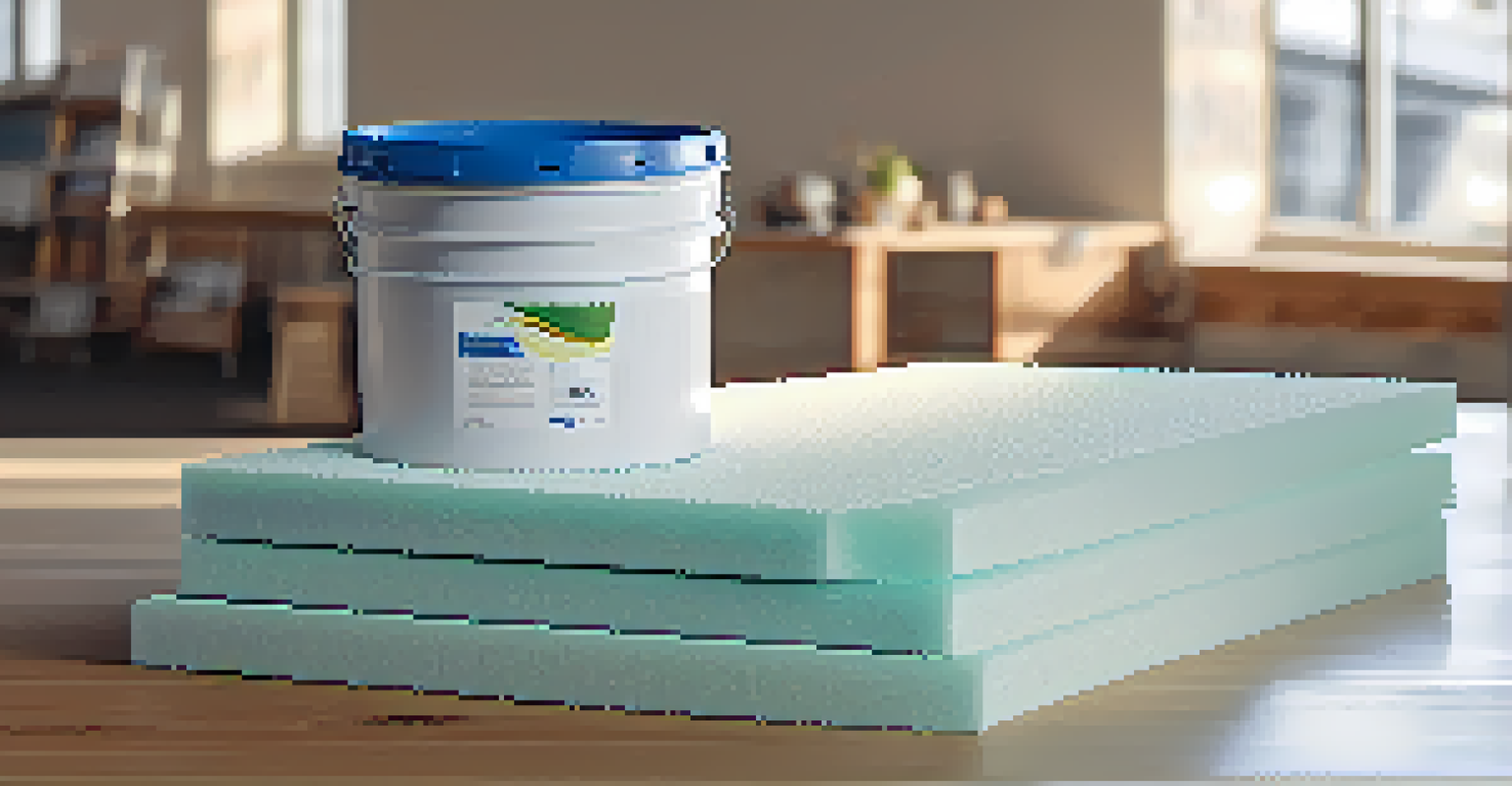The Importance of Material Sourcing in Sustainable Renovations

Understanding Material Sourcing in Renovations
Material sourcing refers to the process of selecting, acquiring, and managing the materials used in construction or renovation projects. It plays a crucial role in ensuring that the materials are not only high-quality but also environmentally friendly. With the growing emphasis on sustainability, understanding material sourcing has become more important than ever.
The Earth does not belong to us: we belong to the Earth.
In the context of renovations, sourcing materials wisely can significantly reduce waste and pollution. For instance, choosing reclaimed wood instead of new timber can help preserve forests and reduce carbon footprints. This not only benefits the environment but also adds a unique character to a home or building.
Moreover, effective material sourcing can lead to cost savings over time. While some sustainable materials may have a higher upfront cost, they often prove more durable and energy-efficient, resulting in lower maintenance costs. This makes it a financially wise choice in the long run.
The Environmental Benefits of Sustainable Materials
Using sustainable materials in renovations helps minimize negative impacts on the environment. For example, materials that are locally sourced reduce transportation emissions, which is a significant contributor to climate change. By choosing materials that are produced or harvested nearby, you can support local economies and decrease your renovation's carbon footprint.

Additionally, sustainable materials often come from renewable resources. Bamboo, for instance, is a fast-growing plant that can be harvested without causing long-term damage to the ecosystem. By opting for such materials, you contribute to a cycle of sustainability that benefits both the planet and future generations.
Sustainable Sourcing Reduces Impact
Choosing sustainable materials minimizes environmental harm while enhancing the unique character of renovations.
Moreover, many sustainable materials are designed to be more energy-efficient. Insulation made from recycled materials can help keep homes warmer in winter and cooler in summer, reducing the need for heating and cooling systems. This not only lowers energy bills but also lessens reliance on fossil fuels.
Choosing Recycled and Upcycled Materials
Recycled and upcycled materials are excellent choices for sustainable renovations. Recycled materials, such as glass or metal, are processed to create new products, while upcycled materials are repurposed into something new without significant processing. Both options help divert waste from landfills and reduce the demand for virgin materials.
Sustainability is about ecology, economy, and equity.
For example, using reclaimed bricks from an old building can add a rustic charm to a new project while significantly reducing waste. Upcycled furniture can also add a unique touch to interiors, making each piece a conversation starter. This creative approach not only benefits the environment but also enhances the aesthetic appeal of your space.
When sourcing these materials, it’s essential to check their origins and ensure they meet safety and quality standards. Many suppliers specialize in reclaimed and upcycled materials, providing options that are both beautiful and sustainable.
The Importance of Local Sourcing
Local sourcing is an essential practice in sustainable renovations that often gets overlooked. By purchasing materials from local suppliers, you can reduce transportation emissions and support your community's economy. This approach fosters a sense of connection between your renovation project and the local environment.
Moreover, local suppliers typically have a better understanding of the materials that work well in your area’s climate and conditions. This localized knowledge can lead to better choices that enhance the durability and performance of the materials you choose. For instance, selecting a roofing material that is suited for your area's weather can prevent future repairs and replacements.
Local Materials Support Communities
Sourcing materials locally not only cuts down on transportation emissions but also bolsters local economies.
Additionally, local sourcing can provide a unique opportunity to discover materials that reflect the character and heritage of your region. Whether it’s locally quarried stone or handcrafted tiles, these materials can give your renovation a sense of place and history.
Energy Efficiency and Sustainable Materials
Energy efficiency is a cornerstone of sustainable renovations, and the choice of materials plays a significant role in this aspect. Selecting materials with high insulation values can help maintain comfortable indoor temperatures, reducing reliance on heating and cooling systems. This not only conserves energy but also lowers utility bills.
For example, using advanced insulation materials, such as spray foam or rigid foam boards, can drastically improve energy efficiency in a home. These materials create an effective barrier against heat loss, ensuring that your home stays cozy in the winter and cool in the summer. Over time, the savings on energy costs can offset the initial investment in these materials.
Furthermore, energy-efficient materials often contribute to creating a healthier indoor environment. Many sustainable materials are free from harmful chemicals, improving air quality and making your space safer for you and your family.
Long-Term Considerations of Material Choices
When renovating sustainably, it’s essential to think long-term about the materials you choose. Opting for durable materials can extend the lifespan of your renovations, reducing the need for frequent repairs or replacements. This not only saves you money but also minimizes the environmental impact associated with manufacturing and disposing of materials.
For instance, choosing high-quality flooring options, such as hardwood or tile, can last for decades if properly maintained. In contrast, cheaper alternatives may require replacement within a few years, leading to more waste and increased costs over time. By investing in durability, you contribute to a more sustainable future.
Certifications Ensure Material Quality
Opting for certified materials guarantees adherence to environmental standards, promoting responsible sourcing and ethical practices.
In addition, consider how your material choices will age and perform over time. Materials that require less maintenance or are easier to repair can significantly enhance the sustainability of your renovation. By planning for the future, you can create a space that stands the test of time both in style and environmental impact.
The Role of Certification in Material Sourcing
Certification plays a vital role in ensuring that the materials you choose for your renovation are genuinely sustainable. Various organizations provide certifications that indicate a material’s environmental impact, such as the Forest Stewardship Council (FSC) for wood products or LEED (Leadership in Energy and Environmental Design) for building materials. These certifications can guide you in making informed choices.
By selecting certified materials, you can be confident that they meet specific environmental and social standards. This not only helps in reducing your project's carbon footprint but also supports ethical practices in sourcing and production. For example, FSC-certified wood comes from responsibly managed forests that provide environmental, social, and economic benefits.

Moreover, many certification programs offer transparency about the supply chain, helping you understand the journey of your materials from source to installation. This transparency fosters trust and accountability, ensuring that your renovation aligns with your sustainability goals.